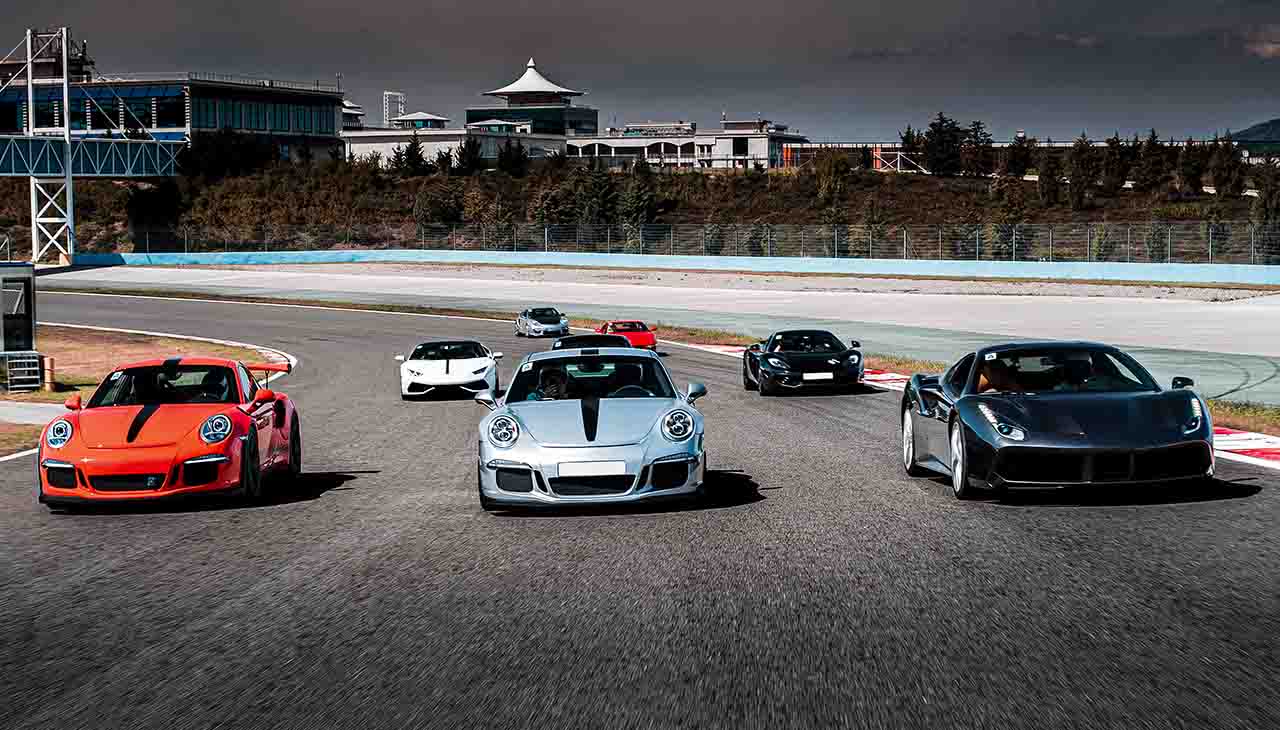In the adrenaline-fueled world of auto racing, safety measures cannot be overstated. The high speeds, competitive nature, and inherent risks of motorsports make it imperative for every racer to prioritize safety above all. This guide illuminates the essential safety gear that forms the bedrock of protection for racers. From helmets that guard against severe head trauma to fire-resistant suits that shield the body during unforeseen accidents, we underline the significance of each piece of equipment not just as a regulatory requirement, but as a vital lifeline on the track.
Helmet
The helmet stands as the first line of defense in protecting a racer from head injuries, which are among the most serious risks in motorsports. A high-quality racing helmet can significantly reduce the risk of traumatic brain injuries, concussions, and skull fractures by absorbing and distributing the force of an impact. Racing helmets come in various designs and materials, tailored to different kinds of racing disciplines. For instance, open-wheel racing helmets often feature advanced aerodynamic properties and robust visor systems to safeguard against debris, while rally racing helmets may include built-in communication systems for better coordination with co-drivers.
Choosing the right helmet involves considering the specific requirements of the racing discipline, including the helmet’s weight, ventilation, visibility, and compatibility with other safety gear like HANS devices (Head and Neck Support devices). Additionally, it is crucial to select a helmet that meets the safety standards set by authoritative motorsport organizations, such as Snell or FIA. A racer’s helmet should provide a snug fit without being overly tight, ensuring maximum protection without compromising on comfort during the heat of competition. With advancements in materials and safety technology, modern racing helmets not only offer supreme protection but also enhance a racer’s performance by being lighter, stronger, and more comfortable than ever before.
Racing Suit
A racing suit serves as a racer’s personal barrier against fire and abrasions, critical forms of protection in the event of a crash or vehicle malfunction. Made from advanced fire-resistant materials, such as Nomex, these suits are designed to withstand high temperatures, significantly reducing the risk of burns. The fabric’s inherent flame-retardant properties are further enhanced through special treatments and weaves, ensuring that the protection lasts throughout the suit’s lifespan.
Beyond their fire-resistant capabilities, racing suits also protect against abrasions. The multi-layer construction of these suits acts as a buffer, protecting the skin from cuts and scrapes that can occur during an impact. This is especially important in open-cockpit racing, where the risk of direct contact with debris or the racing surface is higher.
Customization options for racing suits abound, reflecting the diverse needs and preferences of racers. Manufacturers offer a range of suit customizations, including varying levels of thickness for different climates and racing conditions, tailor-fit options for comfort and mobility, and the inclusion of personal sponsor logos and colors. These customizations not only provide racers with the opportunity to meet their specific safety and comfort needs but also allow them to align with team branding and personal aesthetics. Leveraging such options ensures that each racer has a suit perfectly adapted to their individual requirements, both for protection and performance.
Gloves and Footwear
Equally critical in a racer’s arsenal of safety gear are fire-resistant gloves and footwear. These items not only provide protection against high temperatures but also ensure that racers maintain optimal control over their vehicles during high-pressure situations. Fire-resistant gloves are designed to shield the hands from burns while offering the dexterity needed for precise steering, gear shifts, and other controls. The best racing gloves feature pre-curved fingers and palm grip enhancements to optimize handling. Footwear, on the other hand, must offer a balance between fire resistance and sensitivity, allowing racers to feel the pedals for accurate throttle and brake application.
When selecting racing gloves and footwear, it’s necessary to look for products that are made from advanced fire-resistant materials such as Nomex, similar to those used in racing suits. The items should be lightweight and include moisture-wicking properties to keep the hands and feet dry and comfortable throughout the race. Accreditation from recognized motorsport safety organizations is a hallmark of quality and compliance with current safety standards.
To ensure these vital pieces of safety gear maintain their protective properties, proper care and maintenance are essential. Gloves and footwear should be routinely checked for signs of wear and tear, such as thinning material or loose stitching, which can compromise their effectiveness. Cleaning should follow the manufacturer’s guidelines, typically involving gentle washing to remove oils, sweat, and other contaminants that could degrade the fire-resistant materials over time. Proper storage is also key, with gear being kept in a cool, dry place away from direct sunlight to prevent material degradation.
Investing the time in selecting the right gloves and footwear, coupled with diligent care and maintenance, can significantly enhance a racer’s safety. These practices not only extend the life of the gear but also ensure that racers remain protected, comfortable, and competitive on the track.
HANS Device
The Head and Neck Support (HANS) device represents a revolutionary advancement in motorsport safety, specifically designed to reduce the risk of head and neck injuries in the event of a crash. Comprising a carbon-fiber collar and tether system that attaches the helmet to a shoulder mount, the HANS device effectively restricts excessive head movement during a high-impact scenario. This limitation of movement greatly decreases the likelihood of basal skull fractures, as well as severe neck strains or sprains, by distributing the force of the impact across a wider area of the body, rather than concentrating it in the head and neck.
Integration of the HANS device with existing safety gear is seamless and crucial for comprehensive protection. The device is designed to be worn over the racing suit and under the helmet, with its collar sitting on the racer’s shoulders, secured in place by the suit. The tether connects from the collar to each side of the helmet, thus allowing for sufficient head movement for racers to maintain visibility and situational awareness without compromising safety. For optimal effectiveness, both the helmet and the racing suit must be compatible with HANS devices. Helmets need to have anchor points for tether attachment, a feature found in models approved by major motorsport safety organizations. Similarly, racing suits are designed to accommodate the bulk of the HANS device without compromising the suit’s integrity or the protection it provides.
Overall, the HANS device is a testament to how motorsport continues to evolve in the realm of safety. By working in conjunction with the helmet and racing suit, the HANS device forms an integral part of a racer’s safety ensemble, offering enhanced protection against some of the most severe risks in racing.



